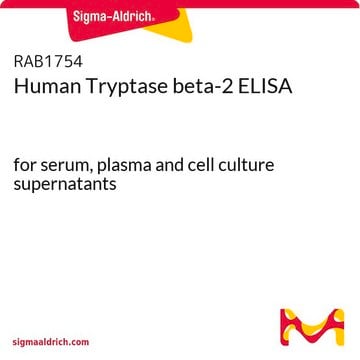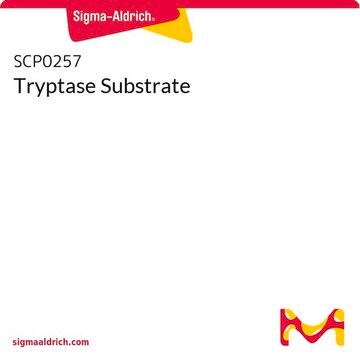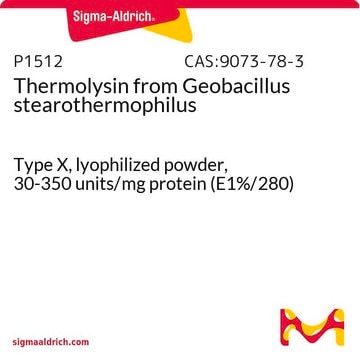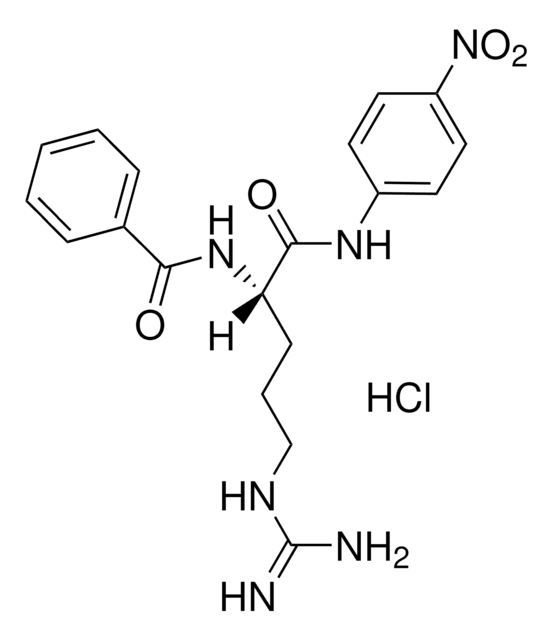The extinction coefficient (E1%) of product T7063, Tryptase from human lung, is 30.3 when measured at 280 nm wavelength.
Wichtige Dokumente
T7063
Tryptase from human lung
buffered aqueous solution, ≥5 units/mg protein
Synonym(e):
Tryptase enzyme
About This Item
Empfohlene Produkte
Form
buffered aqueous solution
Qualitätsniveau
Spezifische Aktivität
≥5 units/mg protein
Mol-Gew.
~135 kDa
Versandbedingung
dry ice
Lagertemp.
−20°C
Angaben zum Gen
human ... TPSAB1(7177) , TPSB2(64499) , TPSD1(23430) , TPSG1(25823)
Allgemeine Beschreibung
Anwendung
Biochem./physiol. Wirkung
Tryptase is released from the mast cell as a result of the degranulation response during anaphylaxis. In addition, several tryptase genes and alleles (α, β, γ & δ) have been identified in various tissues and circulating in blood. Pro-β-tryptase is thought to be the constituative circulating form in blood.
The biological function of tryptase is unknown. However it has been reported to catalyze the activation of complement C3, convert prostromelysin to stromelysin (MMP-3), and cleave fibrinogen resulting in a loss of clottting potential. Tryptase also degrades fibronectin, calcitonin gene-related peptide, vasoactive intestinal peptide,
and kininogen.
Qualität
Physikalische Eigenschaften
Einheitendefinition
Physikalische Form
Lagerklassenschlüssel
12 - Non Combustible Liquids
WGK
WGK 1
Flammpunkt (°F)
Not applicable
Flammpunkt (°C)
Not applicable
Hier finden Sie alle aktuellen Versionen:
Besitzen Sie dieses Produkt bereits?
In der Dokumentenbibliothek finden Sie die Dokumentation zu den Produkten, die Sie kürzlich erworben haben.
Kunden haben sich ebenfalls angesehen
-
What is the extinction coefficient (E1%) of product T7063, Tryptase from human lung?
1 Antwort-
Hilfreich?
-
-
What is the Department of Transportation shipping information for this product?
1 Antwort-
Transportation information can be found in Section 14 of the product's (M)SDS.To access the shipping information for this material, use the link on the product detail page for the product.
Hilfreich?
-
Aktive Filter
Unser Team von Wissenschaftlern verfügt über Erfahrung in allen Forschungsbereichen einschließlich Life Science, Materialwissenschaften, chemischer Synthese, Chromatographie, Analytik und vielen mehr..
Setzen Sie sich mit dem technischen Dienst in Verbindung.












